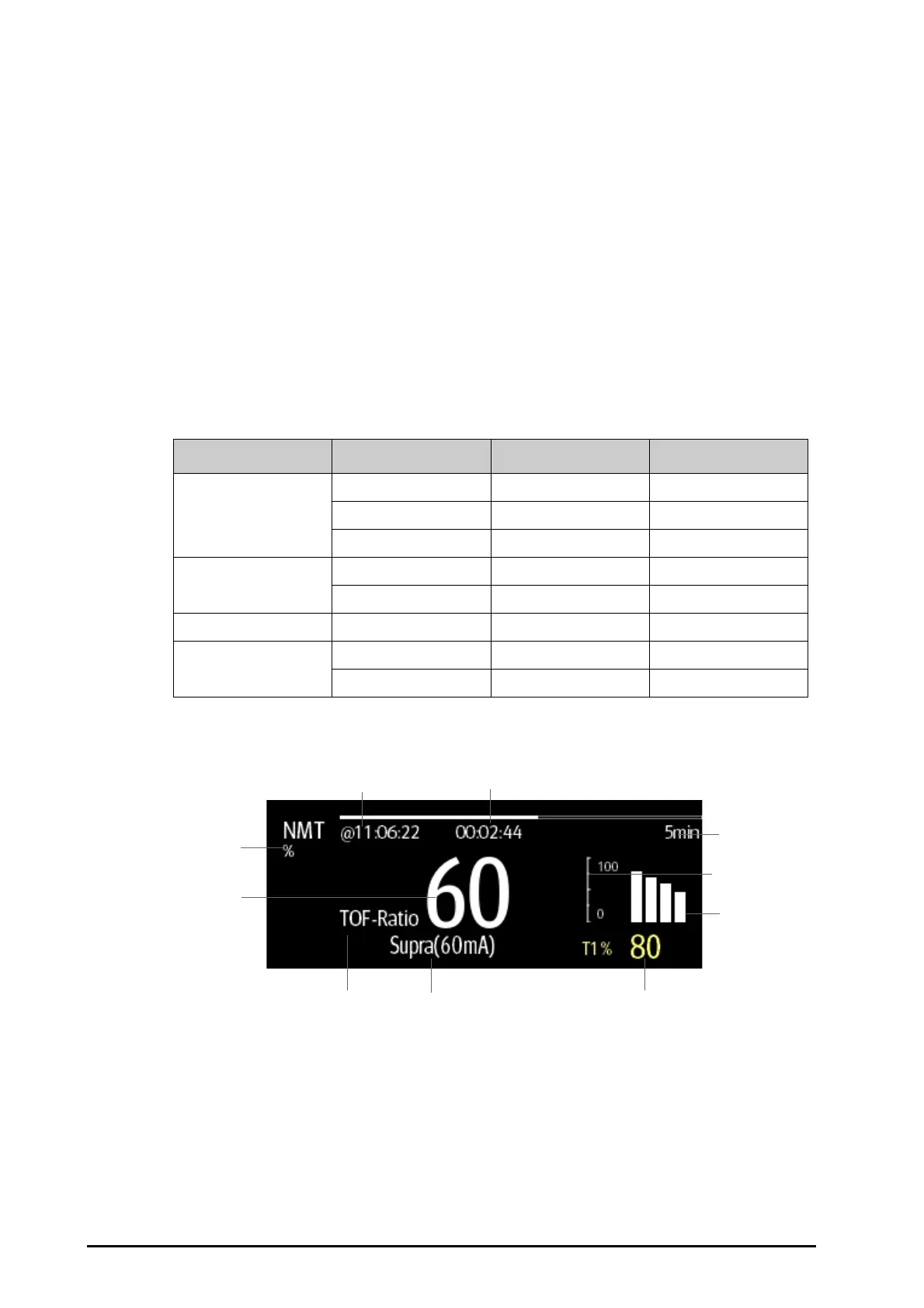28 - 4 BeneVision N22/N19 Patient Monitor Operator’s Manual
After tetanic stimulation, NMT measurements and calibration are disabled for 20 seconds and PTC is disabled for
2 minutes.
28.3.4 Double Burst Stimulation (DBS)
Double Burst Stimulation (DBS) enables better visual observing of the fading in the responses. DBS consists of
two separate bursts at an interval of 750 ms, where each burst consists of certain pulses directly after each other
at a frequency of 50 Hz. The response ratio of the second to the first burst is calculated resulting in DBS-Ratio,
while the number of responses is detected and expressed as DBS Count.
The module supports DBS 3.2 and DBS 3.3. For DBS3.2 mode, the first burst consists of 3 consecutive pulses, and
the second burst consists of 2 consecutive pulses. For DBS3.3 mode, both bursts consist of 3 consecutive pulses.
In DBS mode, the minimum neurophysiological recovery time is 15 seconds. If NMT measurement or calibration
is initiated during this period, it will be automatically delayed.
28.4 NMT Parameters
The following table lists the NMT parameters in different stimulation modes.
28.5 NMT Display
Stimulation Mode Parameter Label Unit Number of Bars
TOF TOF ratio % 4
TOF count / 4
T1% / /
ST ST ratio % 1
ST count / 1
PTC PTC / /
DBS DBS ratio % 2
DBS count / 2
(8)
(6)
(5)
(4)
(3)
(2)
(10)
(9)
(1)
(7)
(1) Parameter unit (2) Parameter value
(3) Parameter label (4) Stimulation current
(5) T1%: responses to the first stimulus as percentage of the reference amplitude in TOF mode. This value is not shown if
calibration fails.
(6) Bar graph: indicates the amplitude of response to the stimulation. The maximum height of the bar graph displayed is
120%. Bar graph is not shown if calibration is not completed successfully.
(7) Scale: indicates the amplitude of response to stimulation.

